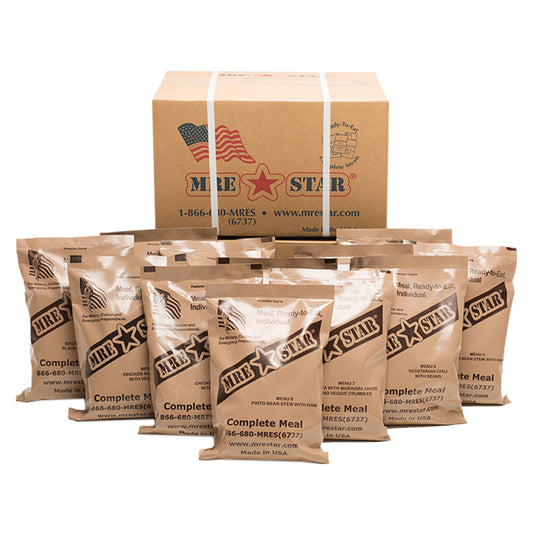The Importance of Calories in Your Food Storage
30 Jan 2012
Calories can be one of the most important aspects of a food storage meal. It is important to find a food storage supply that is balanced and provides enough calories in case of an emergency. EverydayHealth.com states:
(Courtesy of health.gov)
The Ready Store strives to ensure that each of our dishes requires enough nutrients for you and your family. We want to make sure that our dishes have enough calories to keep you healthy in case of a disaster.
"As a general rule, people need a minimum of 1,200 calories daily to stay healthy. People who have a strenuous fitness routine or perform many daily activities need more calories. If you have reduced your calorie intake below 1,200 calories a day, you could be hurting your body ... “Consuming less than 1,200 calories per day may make it difficult to meet vitamin and mineral needs via food,” says nutrition therapist Andrea Spivack, MA, RD, LDN, with Penn Behavioral Health at the University of Pennsylvania in Philadelphia." (Read the original article.)Consuming insufficient calories can lead to malnutrition and undernutrition.
"Typically, the first outward sign of undernutrition is a drop in body fat, according to Medline Plus, a service of the National Institutes of Health, or NIH. In serious cases, bones protrude, cheeks appear hollow, hair falls out and skin becomes inelastic and thin. "Other symptoms of undernutrition include loss of appetite, irritability, unresponsiveness, fatigue and an inability to stay warm. Patients will find it hard to complete everyday tasks due to weakness. More serious complications can also occur, depending on the severity of the calorie deficiency." (Read the original article at LiveStrong.com)It’s important to make sure that you and each member of your family has enough calories in case of an emergency. The U.S. Department of Health & Human Services recommends the following caloric intake per day. Please note that those with special caloric needs, who are breastfeeding, or who are professional athletes; might require more calories.
| Activity Levels | ||||
|
Gender |
Age (years) |
Sedentary |
Moderately Active |
Active |
|
Child |
2-3 |
1,000 |
1,000-1,400 |
1,000-1,400 |
|
Female |
4-8 9-13 14-18 19-30 31-50 51+ |
1,200 1,600 1,800 2,000 1,800 1,600 |
1,400-1,600 1,600-2,000 2,000 2,000-2,200 2,000 1,800 |
1,400-1,800 1,800-2,200 2,400 2,400 2,200 2,000-2,200 |
|
Male |
4-8 9-13 14-18 19-30 31-50 51+ |
1,400 1,800 2,200 2,400 2,200 2,000 |
1,400-1,600 1,800-2,200 2,400-2,800 2,600-2,800 2,400-2,600 2,200-2,400 |
1,600-2,000 2,000-2,600 2,800-3,200 3,000 2,800-3,000 2,400-2,800 |











